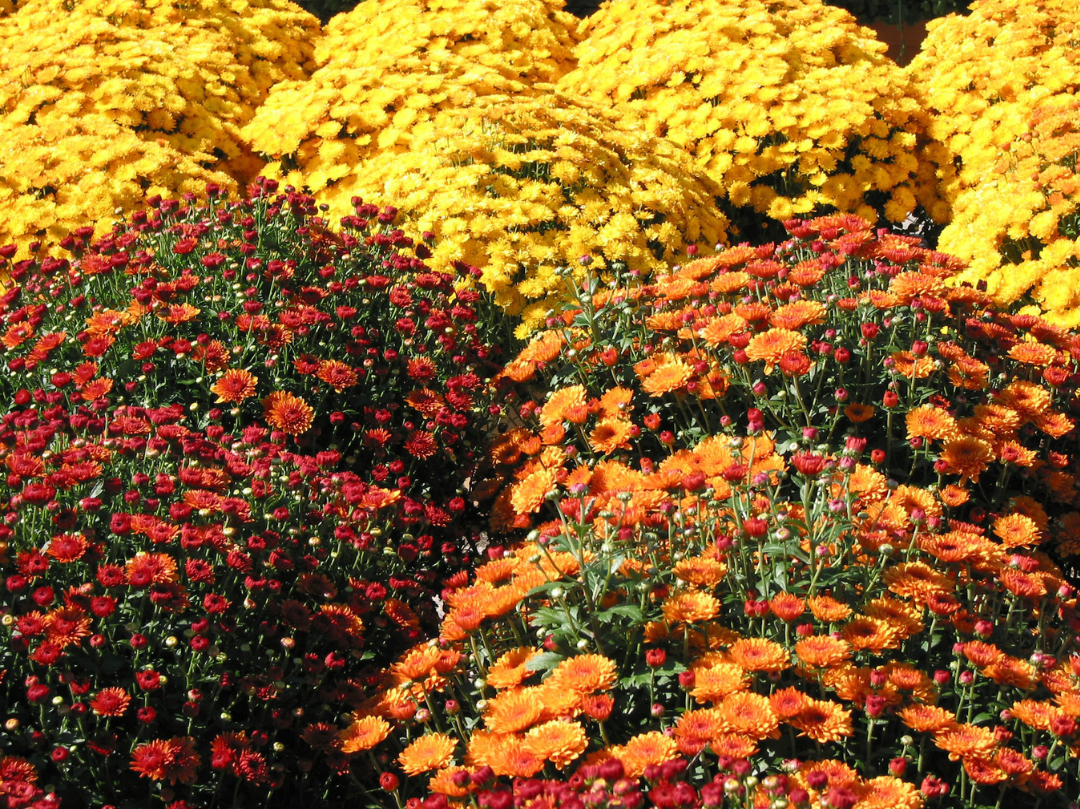As the vibrant hues of summer begin to fade and the cool, crisp air of autumn sweeps in, it's time for homeowners to turn their attention to the garden once more. While the temptation to hang up your gardening gloves and bid adieu to your outdoor oasis may be strong, seasoned gardeners know that fall is the perfect time to lay the groundwork for a breathtaking spring garden. In this guide, we'll explore the art of fall gardening, from essential prep work to climate care suggestions, all in a tone that will inspire your inner green thumb.

Prep Work: Setting the Stage for Spring's Grand Entrance
Before we dive into the mesmerizing world of fall plants, let's talk about the crucial prep work required to ensure your garden flourishes come springtime.
Clean Up and Clear Out
Start by removing spent annuals and any weeds that may have taken root during the summer. A tidy garden is a healthy garden.
Soil Care
Invest in your garden's future by enriching the soil. Add organic matter like compost to improve fertility and texture. A well-prepared soil bed is the foundation for vibrant plants.
Divide and Conquer
Autumn is an ideal time to divide perennials that have outgrown their space. This not only rejuvenates the plants but also creates opportunities for new plantings.
Prune with Purpose
Pruning shrubs and trees in the fall helps shape them and encourages healthier growth. Just be sure to avoid pruning plants that flower in the spring, as you may cut off next year's blooms.

Climate Care: Fall Planting Made Perfect
Once you've whipped your garden into shape, it's time to choose the star players of your spring garden – fall plants. These resilient beauties thrive in cooler temperatures and will reward your efforts with an explosion of color and fragrance next spring.
Bulbs Galore
Tulips, daffodils, crocuses, and hyacinths are all classic choices for fall planting. Ensure they're planted at the right depth and with proper spacing for a stunning spring display.
Pansies for Panache
Pansies are the quintessential fall annuals. Their cheerful faces come in a variety of colors and can withstand mild winters. Plant them in beds, containers, or even hanging baskets for a splash of instant color.
Mums the Word
Chrysanthemums, or mums, are autumn's true stars. With their rich, warm colors, they bring a touch of elegance to any garden. Be sure to deadhead spent blooms for prolonged flowering.
Ornamental Grasses
Grasses like fountain grass, switchgrass, and maiden grass add texture and movement to your garden. Their graceful plumes catch the autumn light, creating a mesmerizing effect.
Plant in Mild Weather
Fall offers stable, cooler temperatures, making it the perfect time for new plantings. The soil is still warm from summer, promoting root development before the frost sets in.

Planting Combinations: Designing a Symphony of Colors
While selecting individual plants is vital, the magic of a spring garden often lies in the harmonious combination of different species. Consider these dynamic duos and trios for a symphony of colors:
Tulips and Daffodils
The classic pairing of tulips and daffodils creates a stunning contrast between vibrant tulip blooms and the subtle elegance of daffodils. Plant them together for an unforgettable display.
Pansies and Violas
Mix and match pansies with their smaller cousins, violas, for a tapestry of color. These cold-hardy blooms will brighten your garden from fall through spring.
Mums and Asters
Combine mums with aster varieties for a late-season burst of color. The bold mums and delicate asters complement each other beautifully.
Consider Height and Texture
When selecting plant combinations, think about varying heights and textures. Tall bulbs like alliums can be paired with low-growing ground covers like creeping phlox for a visually captivating effect.

Maintenance Tips: Nurturing Your Garden's Potential
With your fall plants in place, your work is far from over. To ensure a splendid spring garden, follow these maintenance tips:
Water Wisely
Keep your fall plants well-hydrated but avoid overwatering. Established plants need less water, while newly planted bulbs require more attention.
Mulch Matters
Apply a layer of mulch around your plants to help retain moisture and regulate soil temperature. Mulch also helps deter weeds.
Prune Prudently
Deadhead spent flowers to encourage continuous blooming, especially with mums and pansies. Remove any diseased foliage to prevent the spread of diseases.
Fertilize Sparingly
Limit fertilization in the fall, as it may encourage new growth that won't survive the winter. Save heavy feeding for the spring.
Monitor for Pests
Keep an eye out for garden pests like aphids and slugs. Fall is a time when they may become more active. Address any infestations promptly to protect your plants.

As autumn paints the world in warm hues and the days grow shorter, your garden can remain a vibrant source of joy and anticipation. By investing a little time and effort into fall gardening, you're setting the stage for a breathtaking spring garden that will surely captivate the senses.
So, don't let the changing seasons deter you from embracing the beauty of fall plants. With proper prep work, climate care, and a dash of creativity in your plant combinations, your garden will transform into a mesmerizing paradise that rivals the best of Martha Stewart's creations. Start now, and next spring, you'll be rewarded with a garden that blooms with splendor and sophistication. Happy gardening!
Posted by Infinity Admin on

Leave A Comment